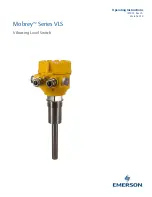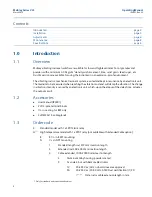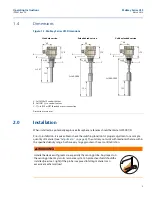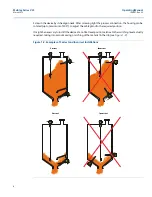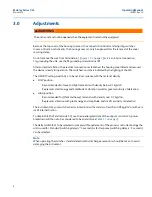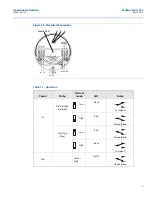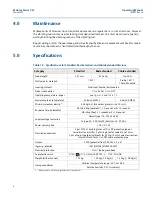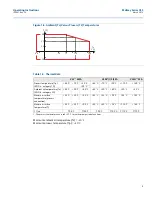
6
Operating Manual
IP4001, Rev CA
Mobrey Series VLS
March 2018
3.0
Adjustments
Remove the top cover of the housing to access the connection terminals and adjusting switches.
In case of Dust Ex instruments, the housing cover can only be opened after the removal of the cover
securing clamp.
Do not remove the wire from terminal pin 1 (
Figure 1-5 on page 7
) as it is an internal connection.
For grounding the unit, use the PE grounding screw terminal PE.
After correct installation, the electrical connections established, the housing cover fitted and secured,
the device is ready for operation. The switched-on state is indicated by the lighting of the LED.
The DENSITY setting (switch A) is to be set in accordance with the material density:
LOW position
–
Recommended for loose and light materials with density below 0.1 kg/dm
3
.
–
Represents small energy and amplitude of vibration as well as great sensitivity of detection.
HIGH position
–
Recommended for (thick and heavy) materials with density over 0.1 kg/dm
3
.
–
Represents vibration with great energy and amplitude, and small sensitivity of detection.
The instrument may not switch correctly in mediums with a density of less than 0.05 kg/dm
3
or with very
small internal friction.
To obtain FAIL SAFE alarm (switch C), use the de-energized state of the output as an alarm. A power
breakdown will then also be considered to be an alarm (see
Table 1-1 on page 7
).
The delay (switch B) is to be selected to comply with requirements of the process control technology the
unit is used for. Standard (switching delay is ~5 seconds) or fast response (switching delay is ~2 seconds)
can be selected.
Note
When operating the switches, standard electrostatic discharge precautions should be taken to avoid
damaging the instrument.
The enclosure must not be opened when the equipment is electrically energized.

